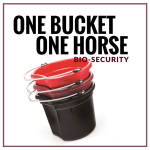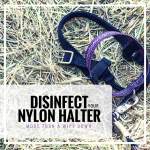
Fall Barn Cleaning for Winter Respiratory Health
Prioritizing Respiratory Health as Horses Spend More Time Indoors As the temperature drops and horses begin to spend more time indoors, it’s ...

Potomac Horse Fever Infections
Potomac Horse Fever spreads through the ingestion of aquatic insects such as Caddisflies and Mayflies. To protect your horses from ingesting infected ...

What Is Vesicular Stomatitis?
Vesicular Stomatitis is a viral disease that causes blisters in the mouth and occasionally blisters to the coronet band and teats. This ...

Tips for Protecting Horses Against Ticks & Lyme Disease
Protecting horses against ticks and Lyme disease can be tricky. This is especially true during the wet spring months when the tick population ...

Horse Bio Security – The One Bucket Rule
When it comes to horse bio security the” one bucket, one horse” rule of thumb may seem obvious, but raise your hand, ...

Could Your Halter Be Harboring Bacteria?
A recent study revealed cleaning a halter with warm water, soap and a disinfectant does not eliminate the highly contagious strangles bacteria ...

What You Need To Know About EHV-1
EHV-1 is a DNA virus that commonly causes upper respiratory infection and can lead to more serious neurologic symptoms. This disease is ...

Understanding EHV-1 and EHM
What is EHV-1 (Equine Herpes Virus)? EHV-1 is a highly contagious herpes virus that can cause several types of diseases in horses ...

Is Pigeon Fever On The Rise?
Pigeon fever actually has nothing to do with pigeons at all. Rather, it is named for the swollen pectoral muscles that generally ...

Containment and Prevention of Equine Herpes Virus (EHV-1)
EHV-1 is one of the most common respiratory diseases among horses and is primarily contracted through respiratory secretions by way of coughing ...